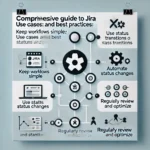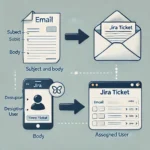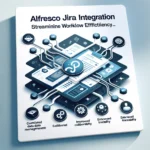Serverless computing has transformed the way applications are built and deployed, and Amazon Web Services (AWS) Lambda is at the forefront of this revolution. In this article, we will dive into the world of AWS Lambda functions, exploring what they are, how to use them, and answering some common questions to help you harness the full potential of serverless computing.
What Are AWS Lambda Functions?
AWS Lambda is a serverless compute service that lets you run code in response to events, such as changes to data in an Amazon S3 bucket or updates to a DynamoDB table. Lambda automatically scales and manages the infrastructure required to run your code without you having to provision or manage servers. This makes it a powerful tool for building highly scalable and cost-efficient applications.
Key features of AWS Lambda include:
- Event-Driven: Lambda functions are triggered by events. These events can be from various AWS services or even custom events.
- Wide Language Support: AWS Lambda supports multiple programming languages, making it versatile for developers.
- Automatic Scaling: AWS Lambda automatically scales your application in response to incoming traffic or increased workloads.
- Cost-Efficient: You pay only for the compute time your code consumes, which makes it cost-effective for variable workloads.
- Fully Managed: AWS Lambda is fully managed, which means AWS handles server maintenance, monitoring, logging, and more.
https://synapsefabric.com/2023/10/13/why-quarkus-with-opentelemetry-is-the-winning-combination-for-modern-application-development/
How to Use AWS Lambda Functions
Setting up and using AWS Lambda functions involves several steps:
- Create a Lambda Function: In the AWS Lambda console, you can create a new function. You choose a runtime (e.g., Node.js, Python), and you can also configure your function’s trigger, such as an S3 bucket or an API Gateway.
- Write and Upload Code: Write your code directly in the Lambda console or package it into a deployment package (e.g., a .zip file) and upload it to Lambda.
- Configure Triggers: Set up triggers for your function. These can be events from other AWS services or custom events generated by your application.
- Testing and Monitoring: You can test your function and set up monitoring and logging to track its performance.
- Deploy and Scale: Once configured, AWS Lambda automatically handles the deployment and scaling of your function as needed.
https://synapsefabric.com/2023/10/13/how-aws-lambda-transforms-businesses-across-industries/
Frequently Asked Questions (FAQs)
1. How much does AWS Lambda cost?
AWS Lambda pricing is based on the number of requests and the duration of your code execution. You pay only for the compute time your code uses. For more details, you can visit the AWS Lambda Pricing page.
2. What programming languages are supported by AWS Lambda?
AWS Lambda supports a variety of programming languages, including Node.js, Python, Ruby, Java, Go, .NET Core, and custom runtimes through AWS Lambda Layers.
3. Can I run AWS Lambda functions locally for testing?
Yes, you can use tools like AWS SAM (Serverless Application Model) or the AWS Lambda Runtime Interface Emulator to test Lambda functions locally before deploying them to AWS.
4. Are there any limits on AWS Lambda functions?
Yes, there are limits on various aspects of AWS Lambda, such as function execution time, memory allocation, and concurrent executions. You can find a comprehensive list of these limits in the AWS Lambda Limits documentation.
To delve deeper into AWS Lambda and its capabilities, you can explore the official AWS Lambda documentation. Additionally, for hands-on experience, you can visit the AWS Lambda Getting Started page.
AWS Lambda functions offer a flexible and cost-efficient way to build applications that can scale to meet the demands of modern, event-driven architectures. By exploring AWS Lambda and understanding how it can be integrated into your projects, you can take advantage of the benefits of serverless computing to develop highly responsive and efficient applications.






